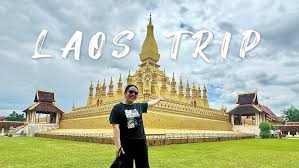Introduction:
A haircut is more than just a trim; it’s a form of self-expression and a powerful means of personal mantetain.in. Whether it’s a subtle change or a bold statement, a haircut can greatly impact how we feel about ourselves and how others perceive us. In this article, we’ll explore the art of haircutting, its cultural significance, and the psychological effects it can have on individuals.
The Historical Evolution of Haircutting:
Throughout history, different cultures and societies have attached various meanings to hair and its grooming. In ancient civilizations, hairstyles often symbolized social status, gender, and even religious beliefs. For example, the elaborate hairstyles of ancient Egyptians reflected both fashion and religious rituals, while in ancient Greece, short hair was associated with warriors and soldiers.
During the Renaissance, elaborate wigs and hairstyles became fashionable in Europe, emphasizing wealth and social standing. Fast forward to the 20th century, and the evolution of popular culture and media played a significant role in shaping haircut trends. Icons like Audrey Hepburn, Elvis Presley, and the Beatles not only influenced fashion but also inspired millions to embrace new and daring hairstyles.
The Psychology of Haircutting:
The act of getting a haircut goes beyond the physical alteration of hair; it often carries psychological significance. Many people experience a sense of renewal and increased self-esteem after a haircut. This phenomenon is not merely superficial; it’s rooted in psychology.
Psychologists suggest that changing one’s appearance, such as through a haircut, can positively impact self-perception and confidence. A new hairstyle can symbolize personal growth, a fresh start, or a desire for change. Additionally, the attention and care received during a haircut can contribute to a sense of well-being, as individuals often feel pampered and rejuvenated.
Cultural Diversity in Haircutting:
Different cultures around the world have unique traditions and rituals associated with haircutting. In some cultures, certain hairstyles may be reserved for specific life events, such as weddings or coming-of-age ceremonies. In others, hairstyles may be used to convey identity, religious beliefs, or societal roles.
In recent years, there has been a growing appreciation for cultural diversity in hairstyles. People are increasingly embracing and celebrating their natural hair textures, colors, and styles, challenging traditional beauty standards and promoting inclusivity.
The Influence of Trends and Technology:
The world of haircutting is constantly evolving, with trends emerging and fading in the blink of an eye. Social media platforms and celebrity influencers play a significant role in shaping these trends, making information and inspiration easily accessible to a global audience. Today, individuals can explore a vast array of styles and techniques, from classic cuts to avant-garde designs, thanks to the influence of skilled hairstylists and innovative technology.
Conclusion:
In the grand tapestry of human expression, the art of haircutting stands out as a dynamic and ever-evolving form of self-transformation. Beyond the physical act of trimming hair, getting a haircut is an experience that holds cultural, psychological, and personal significance. Whether you opt for a subtle change or a radical transformation, a haircut can be a powerful tool for self-discovery, confidence-building, and embracing your unique identity in a world that continually celebrates diversity.

